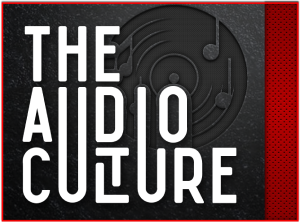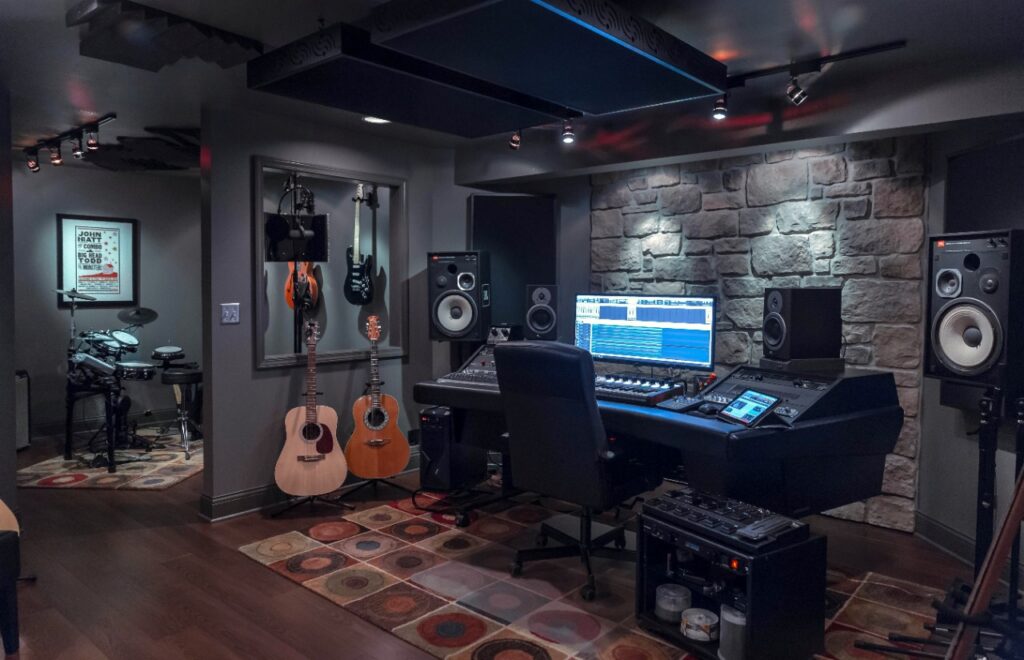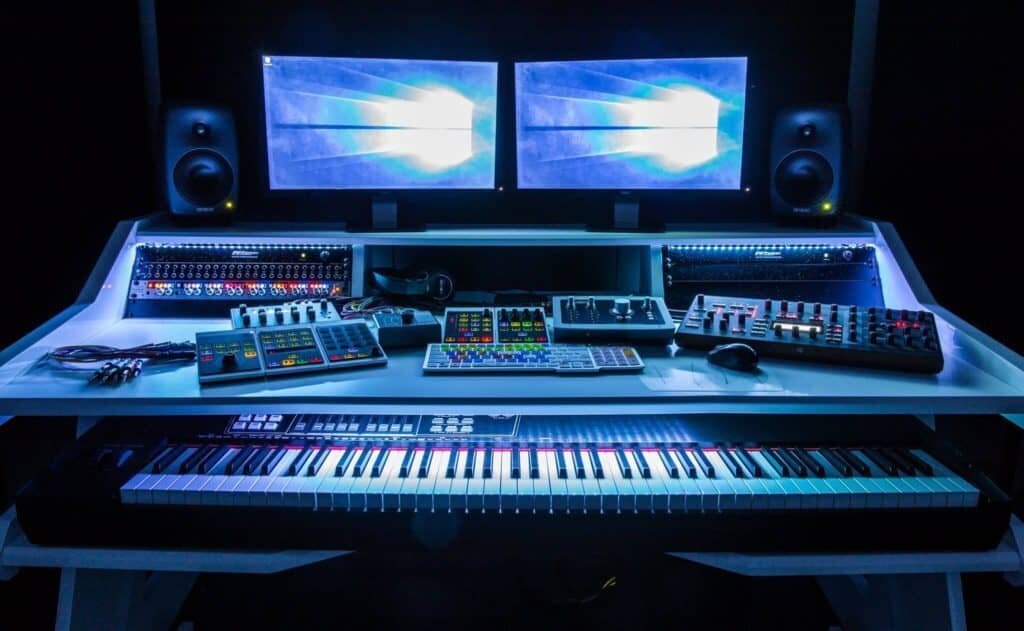Music Production & Audio Engineering Program
Unlock the symphony of your future with precision and passion at The Audio Culture, where dreams harmonize with expertise.
It sounds like you're mentioning a diploma program in audio engineering offered by The Audio Culture, which you're describing as the number one academy in Pune. Pursuing a diploma in audio engineering can be a great step towards building a career in the field of sound production, music recording, mixing, and mastering. Acquiring skills and knowledge in audio engineering can open up opportunities in various industries, including music production, film, television, gaming, and live events. The Audio Culture being recognized as the top academy in Pune suggests that it likely offers comprehensive training, access to industry-standard equipment, and possibly even connections to professionals in the field. If you're considering enrolling in this diploma program, it's essential to research the curriculum, faculty expertise, facilities, and alumni success stories to ensure it aligns with your career goals. Additionally, you may want to inquire about internship opportunities, job placement assistance, and any additional resources or support provided to students. Overall, pursuing a diploma in audio engineering from a reputable institution like The Audio Culture can be a significant investment in your future career in the audio industry. Make sure to gather all the necessary information and carefully consider your options before making a decision.
- DAW/Software
- Cubase
- Pro Tools
- Logic-Pro
- FL Studio
- Ableton
- Sessions - 125+ Sessions
- Months - 1 Year
- Weekly - 3 Days a week
- Time - 1 Hour
- Daily Practice
- Music Theory
- Scale Formulas
- Indian Scales and Ragas
- How to Play Scales
- Modes of Scales
- How to Play Chords
- Chords and Formulas
- Chord Progressions
- Piano Playing and Finger Practice
- Jazz Music Theory
- Diminished and Augmented Scales and Chords
- Understanding Time Signatures
- Basics of Staff Notation
- Instrument Range and Compass
- Ear Training Exercises
- Symphony Orchestra Basics
- Reading and Writing Sheet Music
- Introduction to Harmony
- Dynamics and Expression in Music
- Operating System and Audio Engine Workflow
- Understanding DAW Advanced Features
- Signal Routing Basics
- Project Setup and Management
- File Formats and Compatibility
- How to Export Files
- DAW Tools and Shortcuts
- Using Plugins and Effects
- Saving and Organizing Projects
- Basic of Composition
- How to Compose Music Pieces
- Uses of Chords Progression
- Raga and Scales Explained
- MIDI Signals
- Using the Piano Roll
- Drum Editor Basics
- MIDI Expression Control
- Quantizing Notes
- MIDI Editor Tools
- Importing and Exporting MIDI Files
- Understanding All CC MIDI Signals
- Using Samplers
- Rhythm Sampler Basics
- Understanding ADSR (Attack, Decay, Sustain, Release)
- Sound Design and Synthesis
- Oscillators
- Monophonic and Polyphonic Sounds
- Sound Processing Techniques
- Music Production Techniques
- Song-Making Process
- Creating Melodies
- Arpeggio Patterns
- Music Arrangement Techniques
- Rhythm Arrangement
- Indian Percussion Arrangement
- Guitar Arrangement
- Song Backing
- Arranging Music Pieces
- Symphony Orchestra Arrangement
- Song Backing Techniques
- Vocal Processing
- Exploring Different Genres of Music Production and Arrangement
- VST Plugins – Instruments
- VST Plugins – Effects and Dynamics
- Using Stock Plugins
- Serial Background Score
- Film Background Score
- SFX (Sound Effects)
- Ambience of Sound
- Character of Sound
- Frequency, Amplitude, Sound Travel, and Wavelength
- Understanding Harmonics and Overtones
- Basics of Studio Acoustics
- Power Supply in Audio Systems
- Amplifiers and Preamps
- Mono vs. Stereo Signals
- Interface and Mixer Setup
- Operating System
- Types of Microphones
- Miking Techniques
- Recording Basics
- Vocal Recording Techniques
- Video Dubbing Basics
- Live Instrument Recording
- Introduction to Mixing
- Basic Sound Engineering
- Balancing and Tonal Shaping
- Advanced Sound Processing
- Audio Effects
- Equalizer and Dynamics
- Arrange project for Mixing
- Mixing Different Song Genres
Mastering
Advanced Music Production
Unleashing creativity in music production requires a blend of technical skills, artistic vision, and exposure to diverse influences. The Audio Culture, Pune's leading academy, provides an ideal environment for aspiring music producers to flourish. Here's how The Audio Culture can help unleash your creativity
By immersing yourself in the vibrant ecosystem of The Audio Culture, you can unlock your full creative potential as a music producer and embark on a fulfilling journey in the world of music.
- Pre-production: This phase involves conceptualizing the music, planning arrangements, selecting instrumentation, and creating demos or sketches of the songs. It's a crucial stage where the overall direction and vibe of the music are established.
- Recording: Recording involves capturing performances of musicians, vocalists, and instrumentalists using microphones and recording equipment. It can take place in a professional studio, home studio, or even in unconventional locations for specific sonic qualities.
- Editing: Editing is the process of refining recorded tracks to correct mistakes, adjust timing, pitch, and dynamics, and ensure consistency across different takes. Digital audio workstations (DAWs) are commonly used for editing, offering tools for cutting, pasting, and manipulating audio.
- Arrangement: Arrangement involves structuring the song by organizing its various sections (e.g., verses, choruses, bridges) and determining the progression of musical elements throughout the track. Arrangers may add or remove parts, adjust dynamics, and experiment with instrumentation to enhance the overall impact of the music.
- Sound Design: Sound design focuses on creating and manipulating sounds to achieve specific sonic textures, atmospheres, and effects. This can involve synthesizers, samplers, virtual instruments, and audio effects processors to shape sounds and add depth to the music.
- Mixing: Mixing is the process of balancing and blending individual tracks to create a cohesive and well-balanced mix. It involves adjusting levels, panning, equalization, compression, and other effects to enhance clarity, depth, and dynamics while ensuring that each element contributes effectively to the overall sound.
- Mastering: Mastering is the final step in the production process, where the mixed tracks are polished and prepared for distribution. It involves applying global processing such as equalization, compression, and limiting to optimize the overall sound quality and ensure consistency across different playback systems.
- Collaboration: Music production often involves collaboration among various professionals, including musicians, producers, engineers, and songwriters. Effective communication and teamwork are essential for realizing the artistic vision and bringing out the best in the music.
- DAW/Software
- Cubase
- Pro Tools
- Logic-Pro
- FL Studio
- Ableton
- Sessions - 72 Sessions
- Months - 6 Months
- Weekly - 3 Days a week
- Time - 1 Hour
- Daily Practice
- Music Theory
- Scale Formulas
- Chords Formulas
- Modes of Scales
- Chord Progressions
- Time Signatures
- Basics of Staff Notation
- Instrument Ranges (Compass of Instruments)
- Ear Training
- DAW Advanced Features
- Project Arrangement
- File Formats
- Exporting Files
- Sampler
- Synthesis
- Monophonic and Polyphonic Types
- Sound Processing
- Different Genres of Music Production
- VST Plugins – Instruments
- VST Plugins – Effects and Dynamics
- Using Stock Plugins
- Melody
- Arpeggio Patterns
- Rhythm Arrangement
- Guitar Arrangement
- Music Arrangement
- Song Backing
- Vocal Processing
- Frequency, Amplitude, Sound Travel, Wavelength
- Harmonics and Overtones
- Studio Acoustics
- Amplifiers/Preamps
- Mono vs. Stereo Signals
- Interface and Mixer Setup
- Microphones
- Recording
- Miking Techniques
- Introduction to Mixing
- Balancing and Tonal Shaping
- Sound Processing
- Audio Effects
- Mastering
interested?












